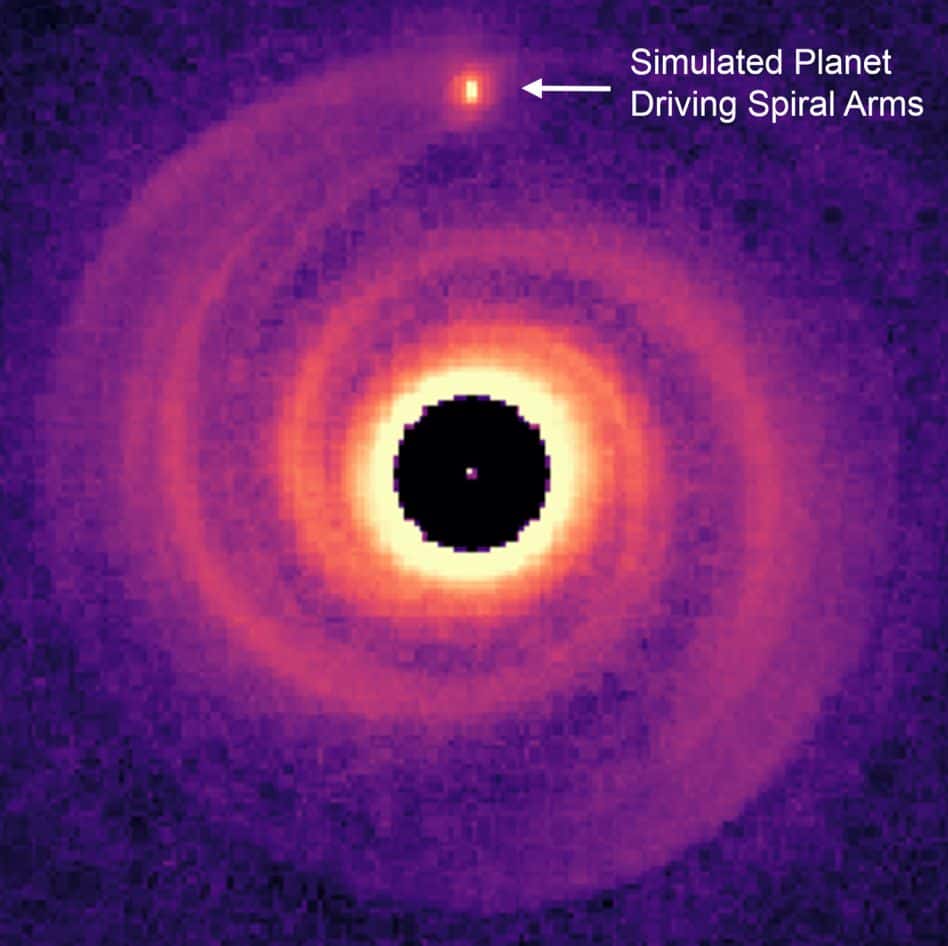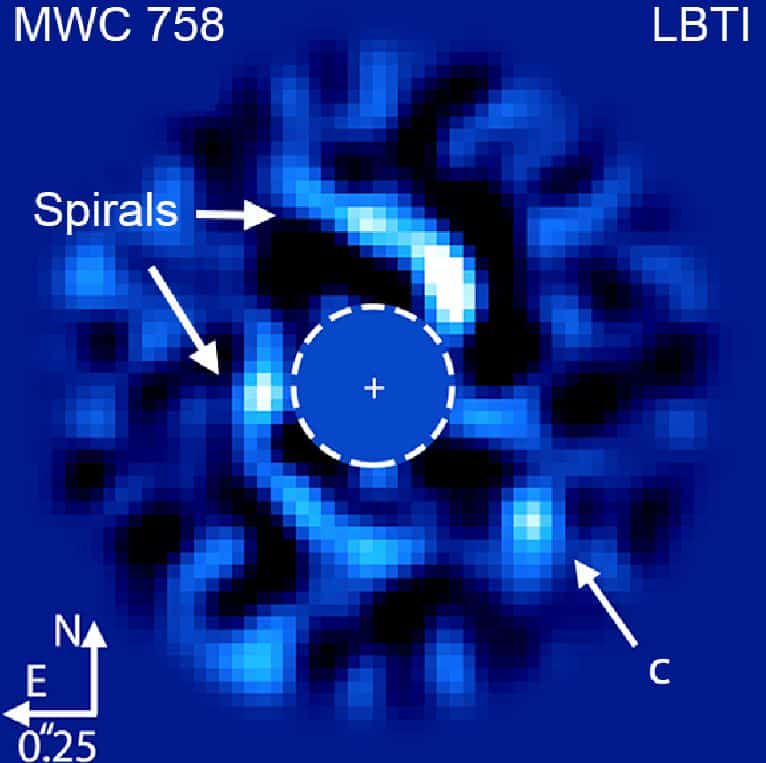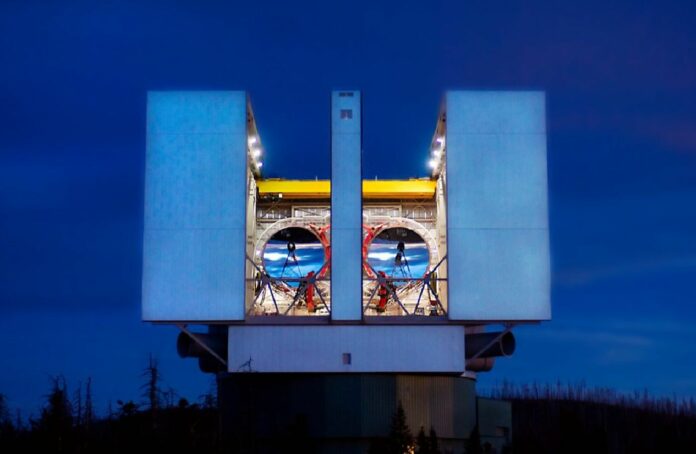Astronomers Think They’ve Found ‘A Solid Piece of Evidence’ Shedding Light on the Formation of Star-Filled Spiral Arms
New findings published in Nature Astronomy by researchers from the University of Arizona shed light on the nature of spiral arms observed in the Milky Way and young star systems.
These spiral arms, filled with stars, are believed to be similar to the protoplanetary disks found around young stars where planets form.
Scientists have long theorized that nascent planets could be responsible for the formation of these arms, but until now, no concrete evidence had been found.
Giant Exoplanet MWC 758c Found Generating Stunning Spiral Arms
The study unveils the discovery of a massive exoplanet called MWC 758c, located approximately 500 light-years away from Earth. This exoplanet, still in its infancy, is generating spiral arms within its own planetary system. The University of Arizona astronomers suggest that their methods for detecting this concealed planet could be applied to finding other hidden planets in similar circumstances.

Lead author Kevin Wagner, a postdoctoral researcher at the UArizona Steward Observatory, states, “Our study puts forward a solid piece of evidence that these spiral arms are caused by giant planets. And with the new James Webb Space Telescope, we will be able to further test and support this idea by searching for more planets like MWC 758c.”
Situated approximately 500 light-years away from Earth, MWC 758c’s host star is just a few million years old, making it a mere embryo compared to our 4.6-billion-year-old Sun.
Consequently, the system still possesses a protoplanetary disk, a remnant of the debris circling the star during planet formation. This disk will eventually give rise to planets, moons, asteroids, and comets over a span of approximately 10 million years.
“I think of this system as an analogy for how our own solar system would have appeared less than 1% into its lifetime,” Wagner added. “Jupiter, being a giant planet, also likely interacted with and gravitationally sculpted our own disk billions of years ago, which eventually led to the formation of Earth.”

Astronomers have already imaged the majority of the protoplanetary disks visible using current telescopes. Among the 30 identified disks, approximately one-third exhibit prominent spiral arms consisting of gas and dust particles.
Wagner explains, “Spiral arms can provide feedback on the planet formation process itself. Our observation of this new planet further supports the idea that giant planets form early on, accreting mass from their birth environment, and then gravitationally alter the subsequent environment for other, smaller planets to form.”
The generation of spiral arms in these disks is attributed to the gravitational influence of a companion planet or a massive object orbiting the star. Previous attempts to detect these responsible planets had been unsuccessful until the recent discovery of MWC 758c.
“It was an open question as to why we hadn’t seen any of these planets yet,” Wagner remarked. “Most models of planet formation suggest that giant planets should be very bright shortly after their formation, and such planets should have already been detected.”
The University of Arizona researchers successfully detected MWC 758c using the Large Binocular Telescope Interferometer (LBTI), an instrument built by the university. Unlike other instruments that operate at shorter wavelengths, the LBTI can observe longer wavelengths in the mid-infrared range. This enabled the identification of MWC 758c, which remained invisible to other telescopes due to its unexpectedly red color—a unique characteristic for an exoplanet.
The LBTI, designed to detect infrared light similar to NASA’s James Webb Space Telescope (JWST), is among the most sensitive infrared telescopes ever constructed. Its larger size allows it to outperform the JWST in detecting planets situated very close to their stars, such as MWC 758c.
According to co-author Steve Ertel, the LBTI lead instrument scientist, the exoplanet’s brightness at longer wavelengths suggests two possible scenarios: it is either colder than expected or still radiating heat from its formation and surrounded by dust.
Co-author Kaitlin Kratter, a UArizona theoretical astrophysicist, explains, “If there is a lot of dust surrounding this planet, the dust will absorb shorter wavelengths, or bluer light, making the planet appear bright only at longer, redder wavelengths.
“In the other scenario of a colder planet surrounded by less dust, the planet is fainter and emits more of its light at longer wavelengths.”
The presence of significant amounts of dust near MWC 758c could indicate that the planet is still in the process of formation and potentially generating a system of moons similar to Jupiter’s moons. On the other hand, if the planet follows the colder model, it would prompt a reevaluation of planet formation models and exoplanet detection strategies, suggesting that early stellar systems may cause planets to form at lower temperatures than previously thought.
The UArizona astronomers plan to utilize the James Webb Space Telescope in early 2024 to further observe MWC 758c and determine which of the two scenarios is occurring within the infant system. The results obtained from these observations will contribute to a better understanding of other stellar systems, potentially leading to predictions about the presence and properties of hidden planets in those systems.
Wagner concluded, “Depending on the results that come from the JWST observations, we can begin to apply this newfound knowledge to other stellar systems and that will allow us to make predictions about where other hidden planets might be lurking and will give us an idea as to what properties we should be looking for in order to detect them.”
Image Credit: D. Steele, Large Binocular Telescope Observatory | K. Wagner et al.
